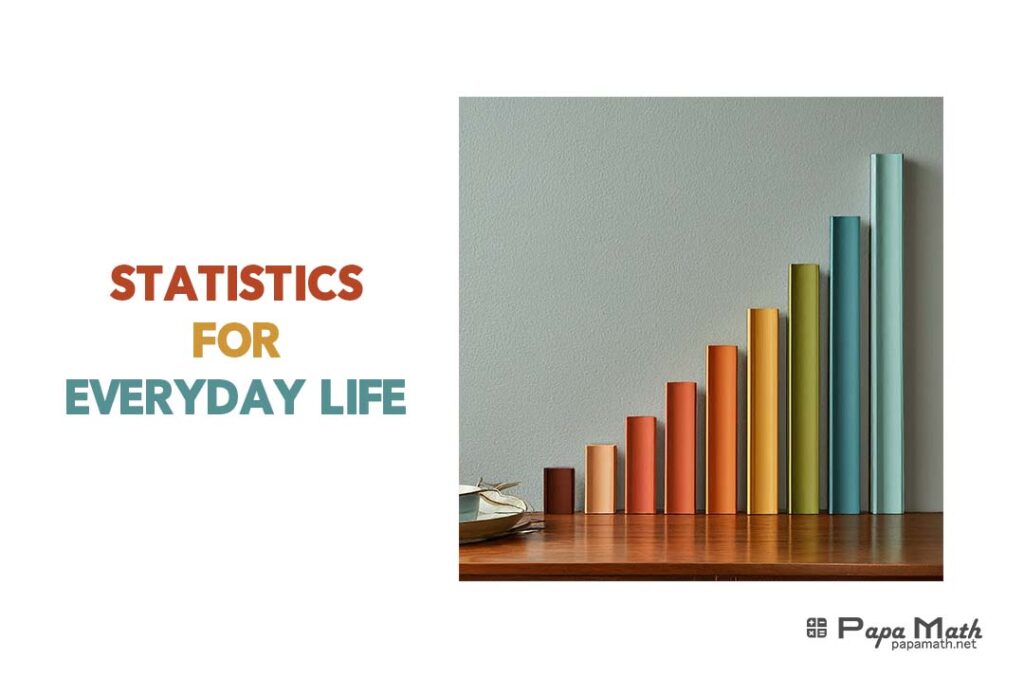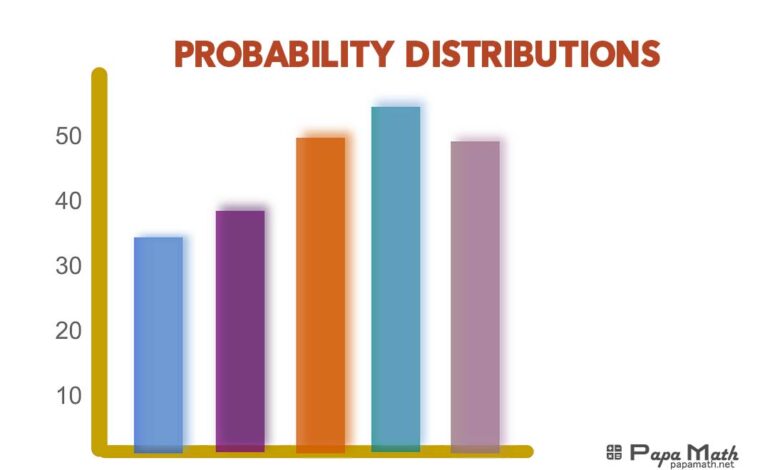
Statistics – it’s a word that might conjure up images of dry textbooks, complex formulas, or intimidating graphs. But what if I told you that statistics is not just for academics or mathematicians, but it’s an integral part of our everyday lives? From deciding what to wear based on the weather forecast to analyzing product reviews before making a purchase, we subconsciously use statistical reasoning more often than we realize. This article delves into the fascinating world of statistics in real life, exploring its applications in various domains, offering real-world statistics examples, and shedding light on how statistical reasoning for everyday life can empower us to make informed decisions.
| Domain | Statistical Concept | Real-Life Example | How it Empowers Us |
|---|---|---|---|
| Weather Forecasting | Probability, Time Series Analysis | Meteorologists analyze historical weather data, current conditions, and atmospheric models to predict the likelihood of rain, snow, or sunshine. This information helps us decide what to wear, whether to carry an umbrella, or plan outdoor activities. | Plan our days, make travel decisions, and prepare for potential weather-related disruptions. |
| Consumer Choices | Averages, Ratings, Distributions | Online product reviews and ratings provide statistical summaries of other customers’ experiences. We use this information to gauge product quality, compare options, and make informed purchase decisions. | Make informed choices about products and services, save money, and avoid buyer’s remorse. |
| Health and Medicine | Clinical Trials, Risk Assessment | Clinical trials use statistical methods to evaluate the effectiveness and safety of new drugs and treatments. Risk assessment models analyze data to identify individuals at higher risk of certain diseases, enabling preventive measures. | Make informed decisions about healthcare, prevention, and treatment options. |
| Financial Planning | Risk Assessment, Forecasting | Financial advisors use statistical models to assess investment risks, predict market trends, and create personalized financial plans. These models help us make informed decisions about savings, investments, and retirement planning. | Plan for our financial future, make informed investment decisions, and achieve our financial goals. |
| Sports Analytics | Performance Metrics, Game Strategy | Sports teams use data to evaluate player performance, track trends, and devise game strategies. This information helps coaches make informed decisions about player selection, lineups, and in-game tactics. | Enhance team performance, gain a competitive edge, and make data-driven decisions. |
| Social Media | User Behavior Analysis | Social media platforms collect vast amounts of data on user behavior, preferences, and interactions. This data is analyzed to personalize content, target advertisements, and improve user engagement. | Enhance user experience, connect with relevant content and advertisements, and make informed decisions about privacy settings. |
| Public Health | Epidemiology, Disease Modeling | Statistical models are used to track the spread of infectious diseases, predict outbreaks, and evaluate the effectiveness of public health interventions. This information is crucial for decision-makers to implement effective policies and allocate resources to protect public health. | Understand disease trends, assess risks, and make informed decisions about vaccination, prevention, and treatment. |
| Environmental Science | Climate Modeling, Trend Analysis | Scientists use statistical models to analyze climate data, predict future trends, and assess the impact of human activities on the environment. This information helps us understand the urgency of climate change and develop strategies for mitigation and adaptation. | Make informed decisions about environmental policies, sustainable practices, and individual actions to protect the planet. |
| Economic Analysis | Economic Indicators | Economists use statistical data to track key economic indicators like GDP growth, unemployment rates, inflation, and consumer sentiment. This information informs government policies, business decisions, and individual financial planning. | Understand the state of the economy, make informed business decisions, and plan for personal finances. |
| Social Trends | Surveys, Polls | Surveys and polls use statistical methods to collect data on public opinion, social attitudes, and political preferences. This information is used by policymakers, marketers, and researchers to understand and influence public discourse. | Understand public opinion, make informed decisions about social issues, and engage in meaningful civic participation. |
Statistics for Everyday Life: More Than Just Numbers
At its core, statistics is about collecting, analyzing, and interpreting data to gain insights, draw conclusions, and make predictions. It’s a versatile tool that enables us to understand patterns, trends, and relationships within data, ultimately helping us make sense of the world around us. While it may seem theoretical, statistics for everyday life is surprisingly practical and relevant.
Consider the weather forecast, a quintessential example of statistics in real life. Meteorologists use sophisticated models to analyze vast amounts of data, including temperature, humidity, wind speed, and atmospheric pressure, to predict the weather. These predictions, often expressed as probabilities, guide our decisions on whether to carry an umbrella, wear a jacket, or plan outdoor activities.
Statistics in Real Life Examples: From Shopping to Sports
Let’s delve into some more real-life examples of statistics that we encounter regularly.
Consumer Choices
Before buying a product, we often consult online reviews or ratings, which are essentially statistical summaries of other consumers’ experiences. These ratings, represented as averages or distributions, help us gauge the product’s quality and make informed purchase decisions.
Health and Medicine
Medical research heavily relies on statistics to determine the effectiveness of treatments, assess risk factors for diseases, and evaluate the safety of drugs. Clinical trials, a cornerstone of medical research, employ statistical methods to compare outcomes between treatment and control groups, leading to breakthroughs in healthcare.
Financial Planning
Financial advisors use statistical models to assess investment risks, forecast market trends, and create personalized financial plans. These models analyze historical data to predict potential returns and guide investors towards optimal financial decisions.
Sports Analytics: The world of sports has embraced statistics like never before. Teams and analysts use data to evaluate player performance, devise game strategies, and predict outcomes. Sabermetrics, the statistical analysis of baseball, revolutionized the sport by providing insights that challenged conventional wisdom and led to more efficient team management.
Social Media
Social media platforms are treasure troves of data, and companies use statistical tools to analyze user behavior, preferences, and engagement patterns. These insights are used to personalize content, target advertisements, and enhance user experience.
Statistical Reasoning for Everyday Life: Making Informed Decisions
The power of statistics lies not just in the numbers themselves, but in the ability to interpret them and apply them to real-world scenarios. Statistical reasoning for everyday life empowers us to:
Evaluate Evidence
When faced with claims or arguments, statistical reasoning helps us assess the quality of evidence and determine whether conclusions are supported by data.
Make Predictions
By analyzing past trends and patterns, we can use statistical models to make predictions about future events or outcomes, enabling us to plan and prepare effectively.
Assess Risk
Statistical tools help us quantify risks associated with different choices, enabling us to make more informed decisions about health, finances, and other aspects of our lives.
Understand Variability
Statistics helps us recognize that there is inherent variability in data, and that not all differences or trends are statistically significant. This understanding prevents us from jumping to conclusions based on anecdotal evidence or limited data.
“Explore the fascinating world of statistics and its practical applications in various fields through our insightful article.”
Data Examples Statistics: Illuminating Real-World Trends
To truly grasp the impact of statistics in real life, let’s explore some data examples statistics that shed light on real-world trends:
Public Health
During the COVID-19 pandemic, statistical models were instrumental in tracking the spread of the virus, predicting hospitalizations, and evaluating the effectiveness of interventions. These models provided crucial information to policymakers and healthcare professionals, guiding decisions that saved lives.
Environmental Science
Statistical analysis of climate data reveals alarming trends in global warming, rising sea levels, and extreme weather events. These findings have spurred governments and organizations to take action to mitigate the impact of climate change.
Economic Analysis: Economists use statistical data to track unemployment rates, inflation, GDP growth, and other economic indicators. These statistics inform government policies, business decisions, and individual financial planning.
Social Trends: Statistical surveys and polls provide insights into public opinion on a wide range of issues, from political preferences to social attitudes. This information is crucial for policymakers, marketers, and researchers seeking to understand and influence public discourse.
Explore Real-World Examples and Applications in the article Unveiling the Hidden Power of Statistics in Everyday Life and discover how statistics shape our daily decisions and problem-solving.
Statistics in the Real World: A Continuous Journey of Discovery
The examples and applications mentioned above are just a glimpse into the vast and ever-evolving world of statistics in real life. As we generate more data and develop more sophisticated analytical tools, the possibilities for statistical insights and applications are boundless. By embracing statistical reasoning for everyday life, we equip ourselves with a powerful lens to view the world, enabling us to make informed decisions, solve complex problems, and navigate an increasingly data-driven society. So, the next time you hear the word “statistics,” don’t shy away from it. Embrace it as a tool that can empower you to understand the world around you and make the most of every opportunity that comes your way.
“Please feel free to ask your query, and I’ll be happy to answer your query.“


